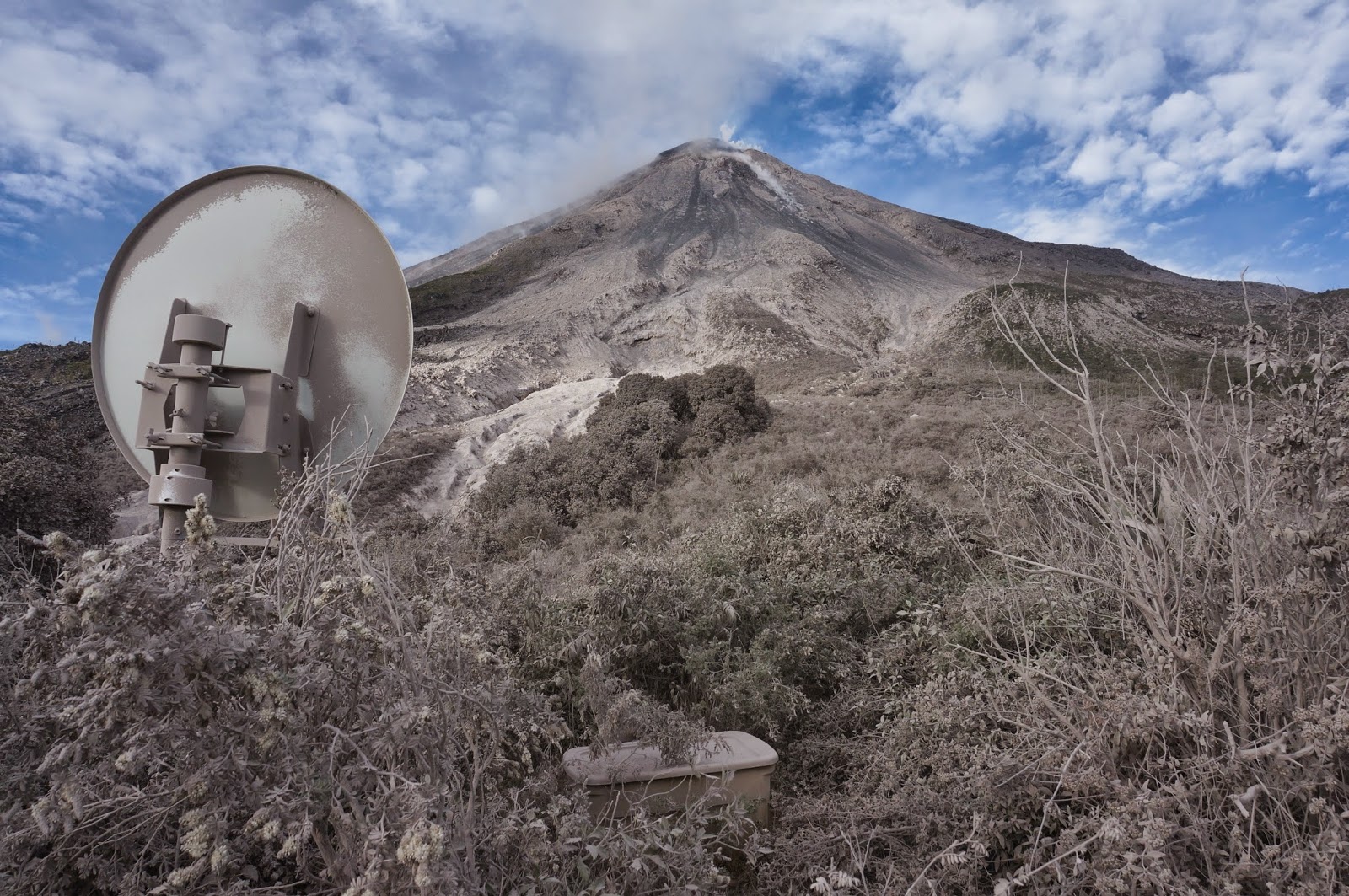With an explosion on Friday, there was excitement in the air. How big exactly was this explosion? Does the lava dome look different? How far did the pyroclastic flows travel? I was up til 2-3 am listening to other volunteers talk frantically about how they couldn't wait for a field trip to Playon to inspect the crime scene. Up til 3 am! Being around people while they talk about what they are passionate about is a good feeling, being around passionate volcanologists was a super good feeling.
The first field trip post explosion was a visit to Montegrande, one of the ravines on the volcano. Since there was four of us, I decided to join Bastian on the back of the truck, which came with a warning from one or two people and boy they did not exaggerate. I could feel my childhood motion sickness rising back up. Thank god the team got straight to work when we arrived (I didn't want to think about my stomach) and not a minute was wasted setting up the thermal camera.
We made a brief pit stop at an exposure on 2005 eruption deposit. Volcan de Colima was particularly active in that year, which included a large eruption in May that resulted in ash depositing at least 5km and volcanic bombs landing 3-4km. It even called for an evacuation of nearby towns, which goes to show that Volcan de Colima shouldn't be underestimated! Looking at the metres thick deposit, it's astounding how much the eruption left behind despite the its not one of the world's most threatening volcano (but it is one of the most volcanoes in the Americas).
Next on our list was to collect the infrasound data. We were crouching under the young trees discussing our excitement for Star Wars and Jurassic Park (yaaay!) trailer. And then it happened... a deep rumbling sound began. A large rockfall? No, there was a deepness to the rumbling... an unsually large rockfall? Don't be ridiculous... it was an explosion! An actually explosion! Nick yelled out what we were thinking and we all ran out from under the trees trying to get a quick glance before we missed it. Never have I simultaneously hated tall trees and being short because all I could see was just the top of the lava dome and the plume (but that's all I needed to see I guess). I think this trip is already overtaking the Nevado trip as first place (the bar wasn't that high to be fair).
We trekked through the vegetation towards the pyroclastic deposits from the Friday explosion. Here is where another disadvantage of being short comes in: when you are walking through thick vegetation, remember to wait a few seconds after the person in front walks through or else you are very likely to get smacked in the face with a branch. I was among tall people and no one understood my short people woes. However, the branches became the least of my troubles when we entered the realms of the ash. The world before us transformed: all colours vanished and replaced with this creamy brown. Every step a person took was vanished among a cloud of dust. It didn't take long before we were engulfed in it too.
We were also literally eating ash. That **** can get anywhere.
We clambered on over (or more like I did while the others strolled along casually) and from the the top of the ravine, we could see the transition between the ash and ash free. Pyroclastic flows stop abruptly. They loose momentum and just DROP DOWN EVERYTHING. You could see some of the plants bent slightly away from the volcano, which showed you that the flow wasn't that powerful, and the trees were unburnt, so it wasn't too hot. It was amazing to see how accurately you could draw out where the flow had stopped.
It was surreal walking in the field covered in pyroclastic flow. The plants were covered by only a mm thick (maybe even half a mm) of ash, but that was enough to wipe out any trace of colour. I could have stayed all day feeling like I was on a movie set but I wasn't keen on having ash filled food. We didn't manage to get everything done on the trip. Unfortunately the cable we needed to connect to the laptop at the radon station wasn't working (always check your equipment before you leave!) which only means another trip to Montegrande!




















































